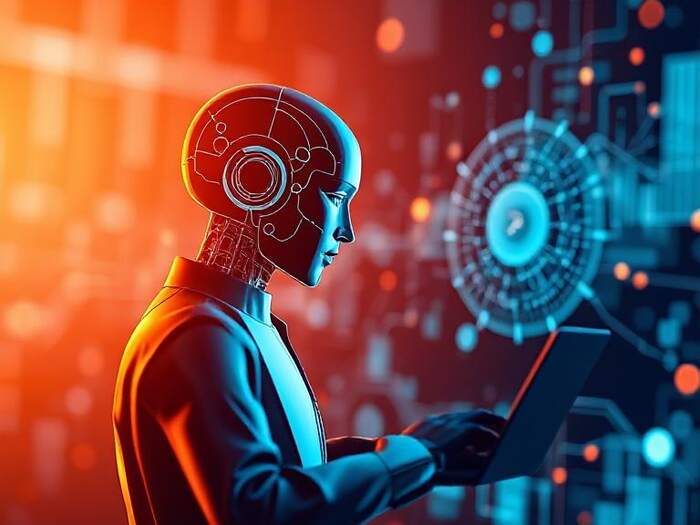In today’s data-driven world, every click, swipe, and online purchase generates a piece of valuable information. But how do companies make sense of this ocean of data? The answer lies in Data Science, and at its heart are two powerful technologies — Artificial Intelligence (AI) and Machine Learning (ML). These are the engines that turn raw numbers into meaningful insights and smart decisions.
Whether you’re an aspiring data scientist or a professional looking to upgrade your career with an IIT Madras Data Science course, understanding how AI and ML shape the world of data is a must. Let’s break it down step by step.
What is Data Science, and Why Does It Matter?
Imagine trying to find a needle in a haystack — that’s what working with raw data often feels like. Data Science helps make sense of it all. It’s the process of collecting, analyzing, and interpreting massive amounts of data to uncover patterns, make predictions, and drive strategic decisions.
From Netflix recommendations to detecting financial fraud, Data Science powers everyday technologies that make life easier, faster, and smarter. But the real magic begins when Artificial Intelligence and Machine Learning enter the picture.
Understanding the Pillars: AI and ML in Simple Terms
Artificial Intelligence (AI): The Thinking Brain
AI refers to machines or systems that mimic human intelligence. Think of AI as a digital brain capable of reasoning, problem-solving, and learning from experience. It’s what allows Siri to understand your voice or a chatbot to assist you instantly.
AI in Data Science automates complex analytical tasks. Instead of manually going through millions of rows of data, AI models can scan, interpret, and draw conclusions in seconds. This speeds up business decisions and reduces human error.
Machine Learning (ML): The Learning Engine
Machine Learning is a subset of AI — it’s what enables systems to learn automatically from data without being explicitly programmed. The more data it processes, the better it becomes at predicting outcomes.
For example:
- Netflix’s “Because you watched…” suggestions
- Google’s auto-complete feature
- Amazon’s product recommendations
All of these are powered by ML algorithms that continuously learn from user behavior to deliver personalized experiences.
How AI and ML Power Data Science
The relationship between AI, ML, and Data Science is deeply interconnected. Here’s how they work together:
Data Collection and Cleaning
Data scientists start by gathering and cleaning data. AI tools can automate this step, identifying inconsistencies or missing values far faster than humans can.
Pattern Recognition
ML algorithms detect patterns in data that are invisible to the human eye. For instance, a bank can identify suspicious transactions that may indicate fraud.
Predictive Analytics
AI and ML models are used to forecast trends — such as customer demand, stock prices, or disease outbreaks — with remarkable accuracy.
Decision Automation
Once trained, these models can make real-time decisions. Self-driving cars, for example, rely on AI systems that process data from sensors and cameras to react instantly.
Natural Language Processing (NLP)
AI enables computers to understand and respond to human language. Chatbots, voice assistants, and translation tools use NLP to interact naturally with users.
Real-World Applications of AI and ML in Data Science
Let’s look at a few areas where the synergy of AI, ML, and Data Science is revolutionizing industries:
-
Healthcare
AI models analyze medical images, detect early signs of diseases like cancer, and recommend personalized treatments. ML helps in predicting outbreaks or understanding patient risk factors.
-
Finance
Data Science backed by ML detects fraud, automates credit scoring, and provides personalized investment recommendations.
-
Retail
Retailers use AI-powered analytics to forecast demand, optimize inventory, and design marketing campaigns that match customer preferences.
-
Education
Platforms like Coursera or edX use ML to suggest courses tailored to a learner’s interests — much like how the applied data science course structures lessons to fit industry needs and learner pace.
-
Transportation
From route optimization in logistics to self-driving technology, AI and ML are redefining how people and goods move efficiently around the world.
Why AI and ML are the Future of Data Science
The importance of AI and ML in Data Science isn’t just about automating tasks — it’s about enhancing human intelligence. These technologies don’t replace data scientists; they make their work faster, smarter, and more impactful.
Here’s why they’re game-changers:
- Speed and Accuracy: Algorithms can process and analyze data in minutes.
- Scalability: AI systems can handle massive data volumes effortlessly.
- Predictive Power: ML models can identify future trends, helping organizations plan better.
- Continuous Improvement: The more data fed into ML systems, the smarter they get.
In short, AI and ML are not just tools — they’re the backbone of modern Data Science.
Building a Career in AI, ML, and Data Science
If you’re excited about diving into this field, you’re not alone. The global demand for skilled data professionals is skyrocketing. But mastering Data Science isn’t just about learning tools — it’s about understanding how AI and ML integrate into real-world problem-solving.
An industry-aligned program like the IIT Madras Data Science course gives learners the hands-on experience, technical depth, and business perspective needed to excel in this evolving domain. Such programs are designed to help professionals transition into data-driven roles with confidence and clarity.
Conclusion
Artificial Intelligence and Machine Learning aren’t just trends — they’re transforming how we live, work, and make decisions. Together, they amplify the power of Data Science, enabling businesses to move from raw data to real intelligence.
In the near future, every industry — from healthcare to finance to education — will rely on data-powered decisions guided by AI and ML insights. And those who understand how to harness these technologies will lead the way in innovation.
So, if you’ve ever wondered how machines “learn” or how your favorite apps seem to “know” you — now you know the science behind it. The next step? Learn it yourself, and become part of the revolution shaping tomorrow.


